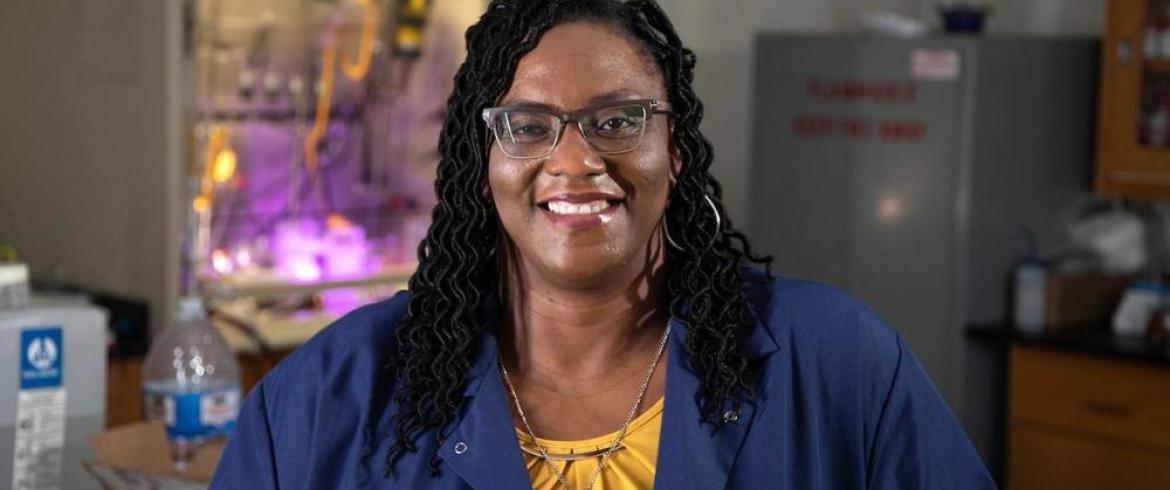
Natalie Arnett, Ph.D. is an associate professor in chemical and biomedical engineering at the FAMU-FSU College of Engineering in Tallahassee, Florida.
MXenes are an intriguing new family of two-dimensional, high-performance electronic materials that could be key to advances in the field of energy conversion and storage. The atoms-thin ceramics are already used in medicine and optoelectronics but recently have emerged as a promising nanomaterial in the development of sustainable energy technologies.
In a new study, scientists at the FAMU-FSU College of Engineering will collaborate with researchers from Clark Atlanta University on a multi-disciplinary National Science Foundation (NSF) study on the novel class of 2D nanomaterials.
Natalie Arnett, an associate professor in the college’s Department of Chemical and Biomedical Engineering, leads the team of scientists developing novel MXene materials for batteries, radiation shielding and supercapacitors. They also aim to improve the performance of existing MXene applications.

“We want to develop MXenes by characterizing their electronic and magnetic properties,” Arnett said. “These materials hold great promise for several applications.”
First discovered in 2011, MXenes are created from 3-dimensional crystals called MAXs, often consisting of titanium or chromium, aluminum, and carbon or nitrogen, arranged in microscopic layers.
To produce an MXene, the aluminum of a MAX is selectively removed by microscopic chemical etching, resulting in a 2D (one or two atoms-thin) layered ceramic nanomaterial with good electrical conductivity. The resulting MXene’s underlying structure allows transition metals to be interlayered, creating new materials, properties and applications. Researchers in the field are exploring the most stable combinations among millions of possibilities.
Unfortunately, the etch process often uses fluorine, a toxic element. Finding a way to make the process safer interests Subramanian Ramakrishnan, a chemical and biomedical engineering professor and investigator on the study.
“We have determined a way to break up these clumps to form single sheets using an organic solvent in a non-toxic process,” Ramakrishnan said. “This is an important development since the uniform surface chemistry of the MXene is critical.”
Ramakrishnan wants to study the use of an organic solvent in more detail to establish design rules for creating novel MXene structures and devices.
Arnett and Ramakrishnan are working with several researchers from the college, including Okenwa Okoli, chair and professor of industrial and manufacturing engineering, and Theo Siegrist, professor of chemical and biomedical engineering. Dinadayalane Tandabany, an associate professor of chemistry at Clark Atlanta University and project collaborator, will focus on predicting the properties and performance of the materials.
The MXenes research at the college and its associated laboratories are a boon to the Florida A&M University and Florida State University students at FAMU-FSU Engineering. Graduate and undergraduate engineering students will work with the group on the new synthesis and exfoliation techniques. They will have the opportunity to work with instrumentation at the nearby National High Magnetic Field Laboratory and use state-of-the-art equipment to fabricate MXene structures and devices.
“The project will provide postdoctoral researchers, minority graduate and undergraduate students the opportunity to gain valuable experience in new technologies in material research,” Ramakrishnan said.
The research is funded by a three-year, $700,000 grant from the NSF to Florida A&M University.
